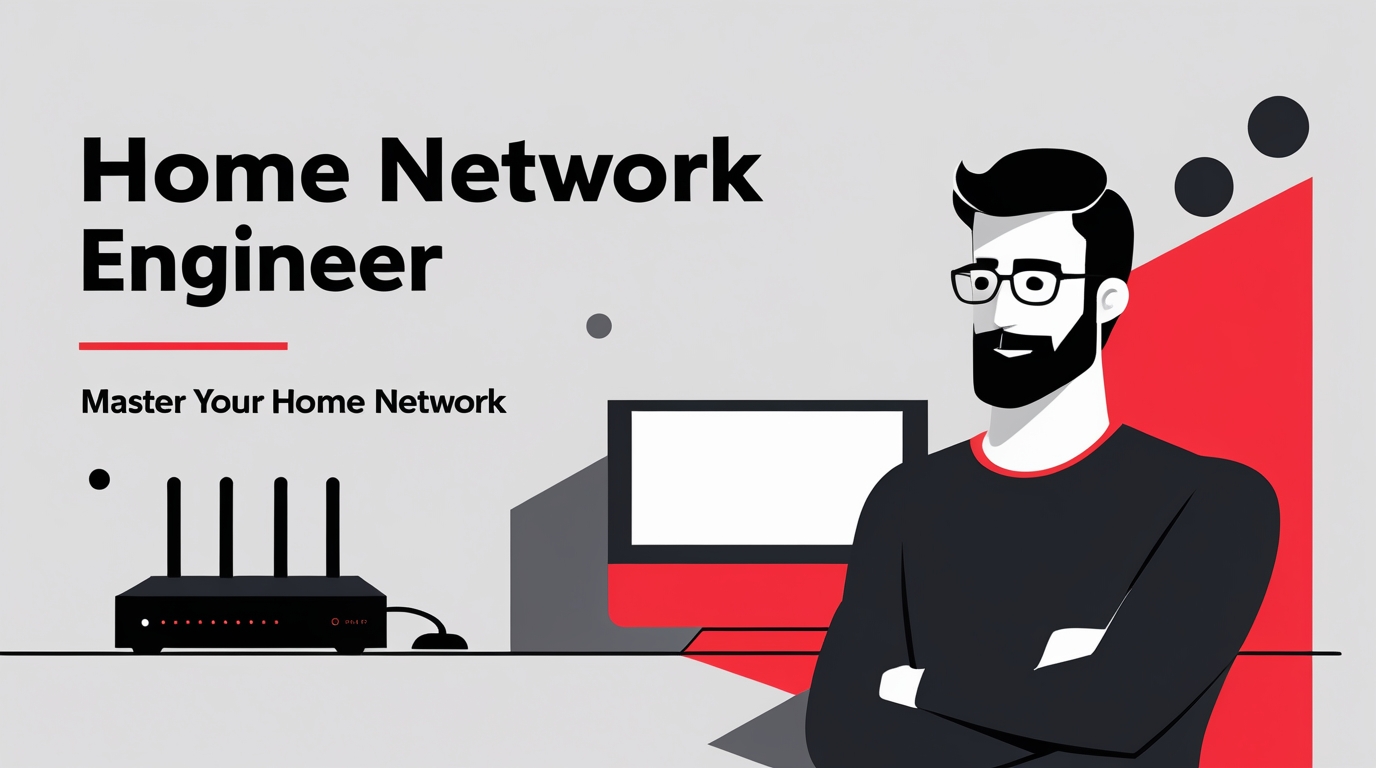Everything You Need To Know About Setting Up Your Wireless Router
Back in the early days of Wi-Fi, setting up a router was like wrestling an octopus. Forums were full of people tearing their hair out, trying to get their gadgets online. Thankfully, manufacturers finally caught on: nobody wants a degree in computer science just to watch Netflix.
These days, you can pull a router out of the box, plug it in, type in the Wi-Fi name and password on the sticker, and you’re up and running. Quick and easy, right? Well… sort of. That’ll get you connected, but not necessarily securely connected. And if you want to do more advanced stuff later—like prioritizing your gaming rig or creating a guest network—you’ll need to know your way around the settings.
So let’s walk through it step by step. I’ll explain what’s what and guide you through the important stuff. No jargon, no stress.
Wireless Router Setup – Video
Note: Everything in this article is demonstrated in the video below:
How Do I Get Into This Thing?
Step 1: Getting Into Your Router
Before you can change any settings, you’ve got to actually “get inside” the router. Don’t worry, we’re not cracking it open with a screwdriver.
Most routers let you connect in a few ways:
- Wi-Fi (using that sticker info on the bottom)
- An Ethernet cable (still the most reliable option)
- Or even scanning a QR code with your phone on newer models
Sometimes your new wireless router will be on a different network than your computer, and it won’t connect. To keep things simple, plug one end of an Ethernet cable into your computer and the other end into one of the router’s LAN ports. Restart your computer, and it’ll grab an address from the router automatically (that’s called DHCP doing its magic).

Now open your web browser and type in the router’s address. It’ll look like one of these:
192.168.0.1192.168.1.1- Or something friendlier like
tplinkwifi.netorrouterlogin.net
Step 2: Change the Admin Password
The very first thing you should do—before touching anything else—is change the admin password.
- Admin password: the key you use to configure the router.
- Wi-Fi password (passphrase): the one you give your devices to get online.
They are NOT the same. The admin password is like the key to your front door. If someone else has it, they can reprogram your whole network.
Make it strong, make it weird: iehjr028uy45z! works. Don’t use your pet’s name, birthday, or address. If remembering it freaks you out, use a password manager like LastPass to keep track.
Step 3: Get the Router Talking to the Internet
A router is just a fancy paperweight if it’s not online.
- Make sure your modem is powered up and the cable from your ISP is plugged in.
- Connect the modem to your router’s WAN/Internet port.
- Restart the router to let it sync.
Most ISPs use Dynamic IP (it sets itself automatically). DSL might use PPPoE, which requires a username and password from your provider. Don’t stress too much—the router’s setup wizard usually gets this right. Just double-check instead of blindly clicking “Next.”
Step 4: Secure Your Wi-Fi Passphrase
This is the password you’ll actually type into your phone, laptop, or TV. The default one printed on your router? Toss it. If a neighbor snaps a pic of that sticker, they’re in.
Tips for a good passphrase:
- Mix letters, numbers, and symbols
- Swap letters for numbers:
1lov3myc4t!is way stronger thanilovemycat - Don’t use the same password you already use for Netflix, email, or anything else
The good news? You only type it once per device. After that, your gadgets remember it.

Step 5: Learn DHCP (But Don’t Fear It)
DHCP sounds scary, but it just means your router automatically hands out little “address cards” to every device in your house.
Most people never touch it. But if you get fancy later—like assigning your Xbox a fixed address so it always has priority—this is where you’ll go. It usually lives in a section called Network or LAN Settings.
If the mildly curious geek in you wants an in-depth demonstration of how DHCP and other important settings on your home network work, you may want to check out my Home Network Engineer course.

Step 6: QoS – Making Netflix and Gaming Play Nice
QoS = Quality of Service. It’s geek-speak for “who gets the Wi-Fi first.”
- Got kids gaming while you’re trying to Zoom? QoS can prioritize your work laptop.
- Want the living room TV to always get smooth 4K streaming? QoS has your back.
Every router handles this differently. Look for terms like “Dynamic QoS” or “Adaptive QoS.” They’re usually simpler than “Traditional QoS,” which can be a pain. My rule of thumb? Use it if you need it, but don’t lose sleep over it if you don’t.
Step 7: Keep Your Firmware Fresh
Firmware is your router’s brain. Manufacturers update it to patch bugs, add features, and improve security.
- Some routers update automatically—awesome.
- Others require you to log in, download, and update manually.
Always make sure you’re using the exact firmware for your model, or you could “brick” it (tech slang for turning your router into a very expensive doorstop).

Step 8: Backup Your Settings
Once you’ve got everything the way you like it—strong passwords, Wi-Fi name set, maybe QoS rules—save a backup.
Most routers have a “Backup/Restore” option in the admin menu. It’ll save all your settings to a file on your computer. That way if you ever reset your router (or mess something up while experimenting), you can restore everything in one click instead of redoing hours of work.

WiFi Guy’s Take
Setting up a router today is miles easier than it used to be, but the devil’s in the details. Don’t just settle for “plug and play.” Spend a few extra minutes securing your admin password, customizing your Wi-Fi passphrase, and updating the firmware. Do that, and your network will be fast, secure, and ready for whatever you throw at it—whether it’s Zoom calls, Fortnite battles, or three TVs streaming Netflix at once.
And remember: your router isn’t scary. It’s just the traffic cop of your internet. Learn to talk to it, and you’ll never have to wait around for “that tech friend” to save you again.
More Wi-Fi 🧠Brainiac Tips!
Speed Up Your Wi-Fi Without Losing Your Mind
Is It Time For Wi-Fi 7?
Why Do I Need Wi-Fi 6E?
Best Wireless Routers Under $100
NAS vs Cloud Storage
Ladies, How To Set Up Your Wi-Fi Without A Man
WiFi Extenders vs Mesh: Which Is Best?
How Do I Set Up My Wireless Router?
What Are The Top WiFi 6 Mesh Systems For Large Homes?
Home Network Engineer Course
✅ You’ll Be Able To:
- Fix Wi-Fi and device problems fast – Know what’s wrong and how to handle it
- Speed up your connection – Boost coverage, kill lag, and reduce dropouts
- Lock it down – Protect your network from freeloaders and shady devices
- Upgrade with confidence – Know what gear to get (and what to skip)
- Stop second-guessing yourself – Never be scared of a blinking router again
















